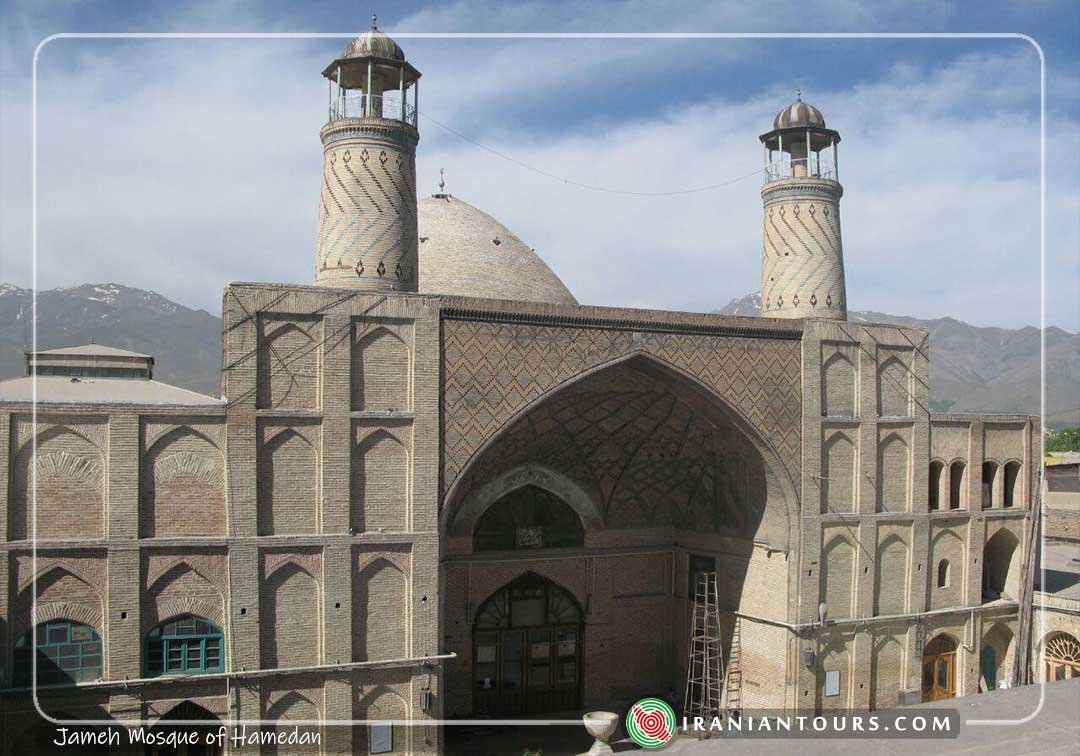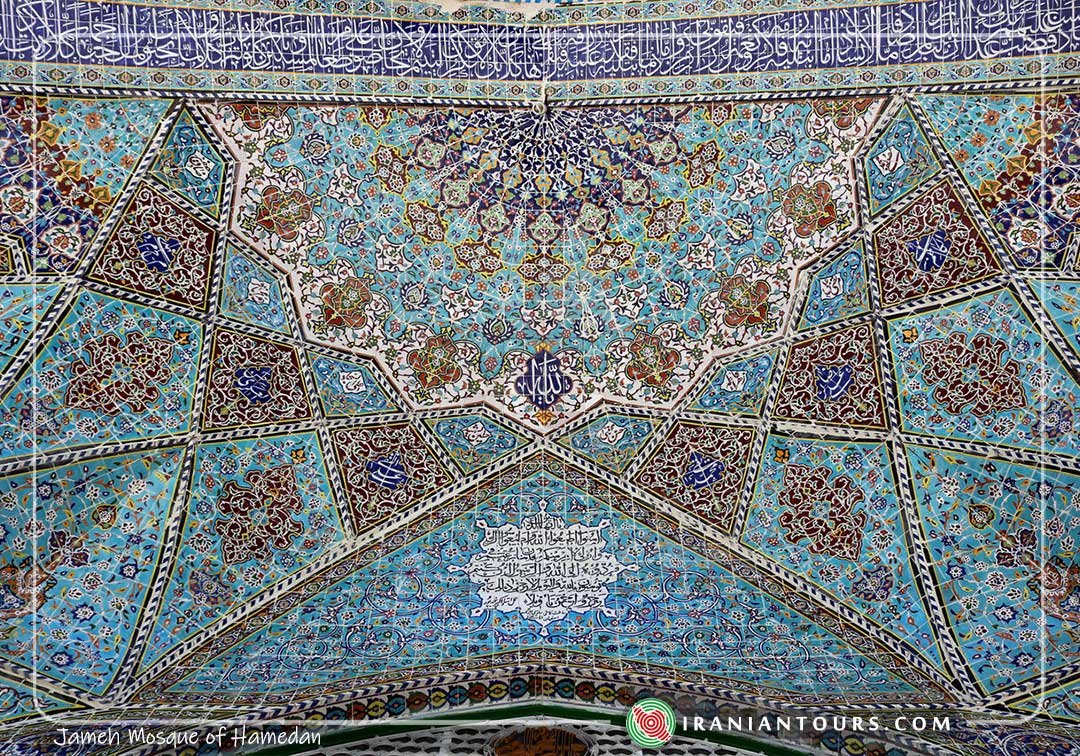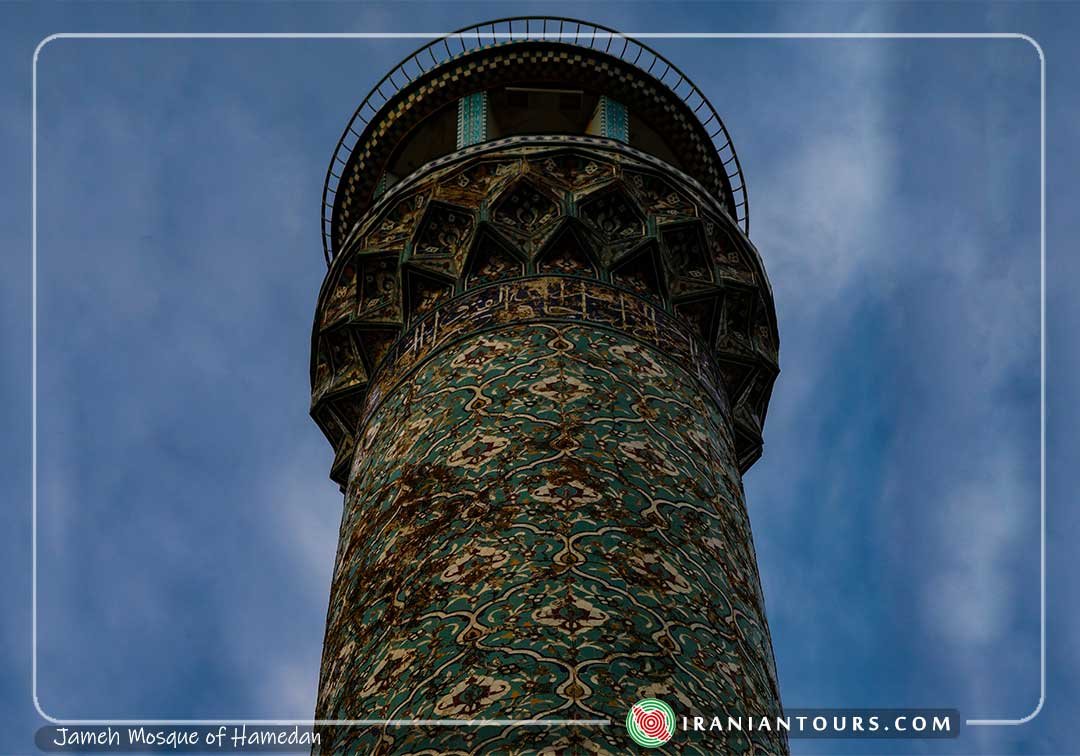Jameh Mosque of Hamedan
The Qajar-era (1789-1925) monument is where communal prayers are said five times a day by the faithful. The mosque is rectangular in shape. It used to have four ivans (porticos) of which three have remained. The mosque comprises of two areas for communal prayers, a brick dome, and a relatively vast courtyard with a huge pool in the center.
It also has two shabestans, six minarets, and three balconies in northern, eastern and southern directions. Shabestan is an underground space that can be usually found in Iran’s traditional mosques, houses, and schools. The mosque, which is a national cultural heritage, has a double-shell dome, decorated with colorful glazed tiles, it also boasts intricate stuccowork, woodwork, and tilework, many of which embellished with arabesque designs.
The terms “Jameh Mosque” or “Masjed-e Jameh” or “Friday Mosque” is used in Iran for a grand communal mosque where mandatory Friday prayers are performed: the phrase is used in other Muslim countries but only in Iran does it designate this purpose.
The Jame Mosque in Hamadan was built in the style of Fath-Ali-Shah-e Qajar period. This mosque has 2 Shabestans, 6 minarets, and 3 balconies in northern, eastern, and southern directions, which in recent years, a different shabestan has been built there with pillars in this mosque. There are no references to the builder in the inscriptions in the mosque. There are 3 doors to enter the mosque, which according to the recent construction the main entrance door, that was on the west side of the mosque, was moved to the northern part by the construction of new entrances. The mosque has a double shell dome decorated with tiles. Other decorations used in the mosque can be pointed to gypsum Mogharnas (Moqarnas). The mosque is registered in the list of Iran’s national monuments with registration number 1733.





